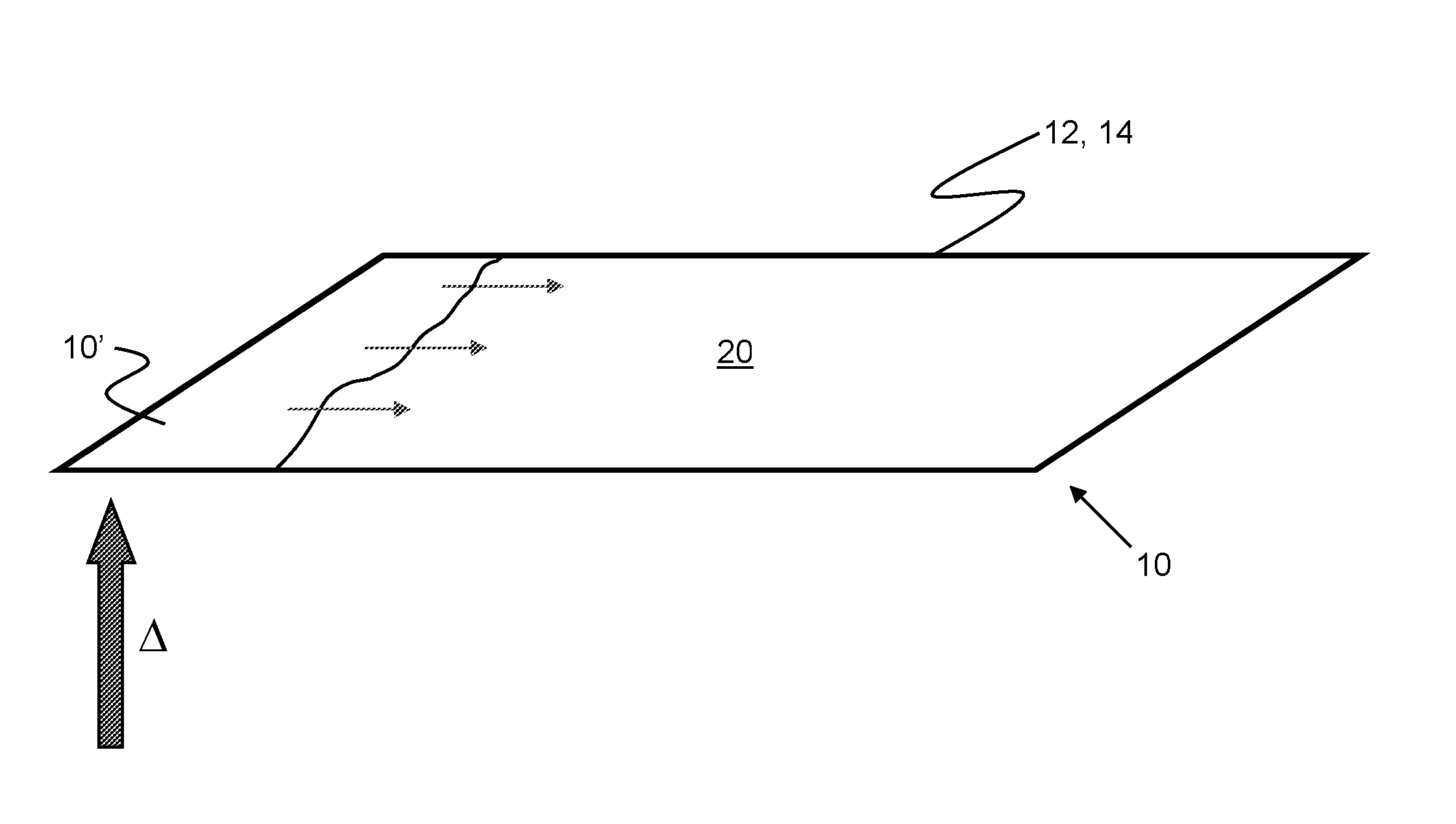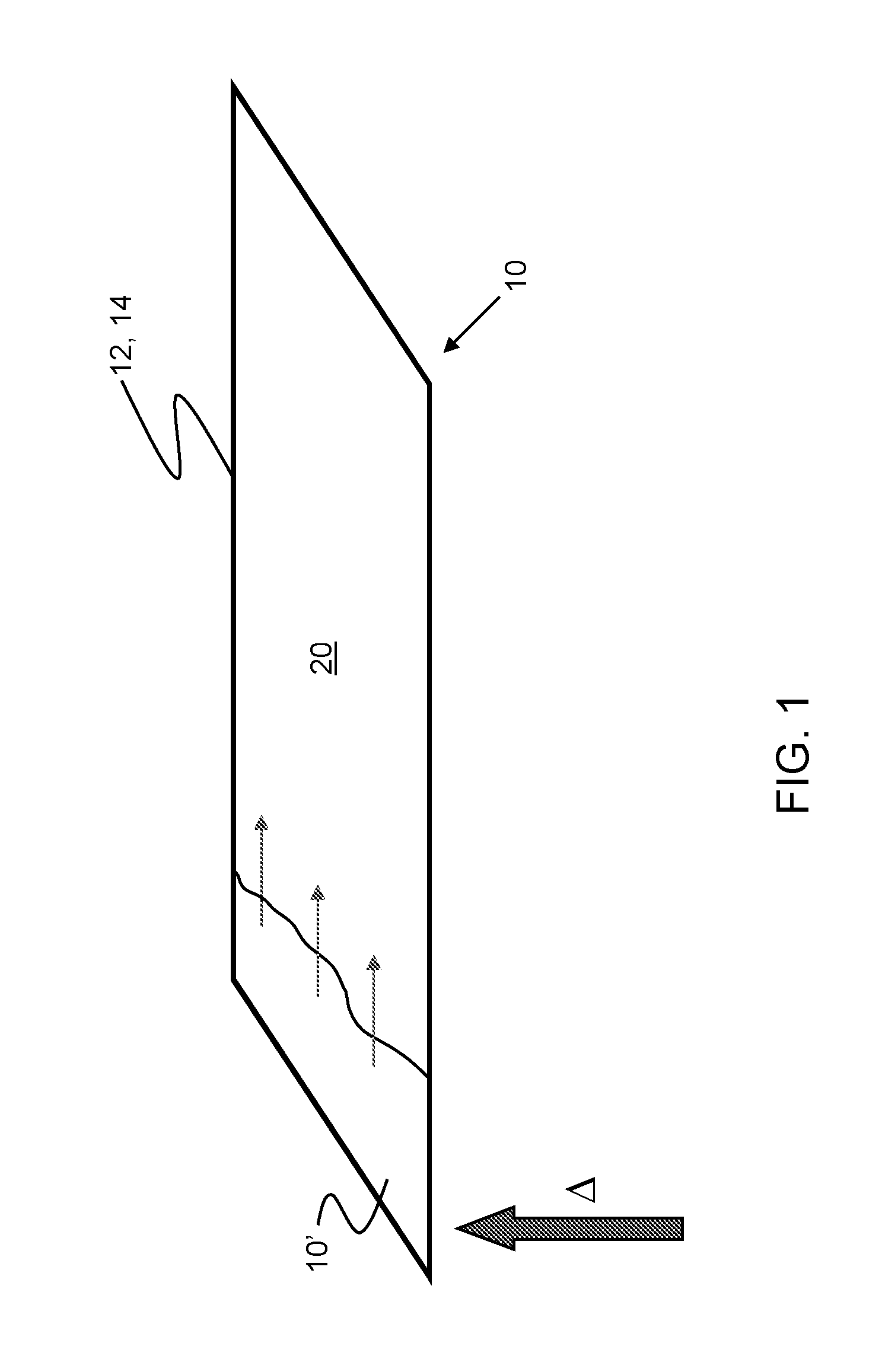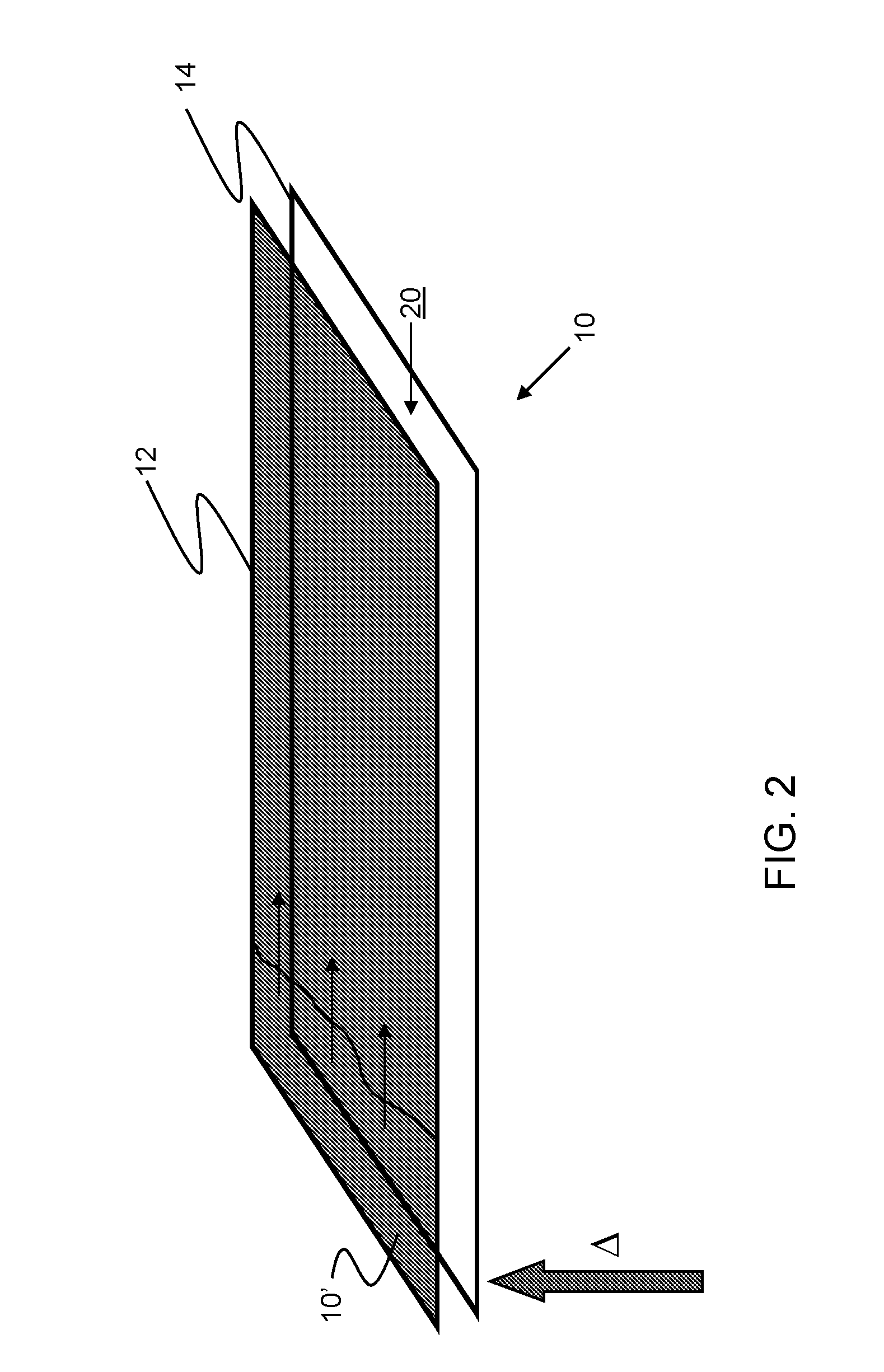Curing composite materials comprising latent-cure resins
a composite material and latent cure technology, applied in the field of curing composite materials, can solve the problems of high peak temperature, difficult to cure thick composite materials, and difficulty in dissipation of heat out of composite materials,
- Summary
- Abstract
- Description
- Claims
- Application Information
AI Technical Summary
Benefits of technology
Problems solved by technology
Method used
Image
Examples
example 1
Adiabatic Hardening of 18 mm Thick Pre-Preg Slab
[0043]A layer of 18 mm thick carbon-fibre reinforced epoxy resin slab was provided, which comprised hardener and promoter such that its cure onset temperature was 75° C. The slab was provided with thermosensors 1-8 as illustrated schematically in FIG. 3. The slab was arranged such that one end overlapped a heated aluminium plate 30.
[0044]Thermosensors 1-8 were located as follows:[0045]Sensor 1 is at the interface between carbon and aluminium plate[0046]Sensor 2 is at the same location but 12 mm above[0047]Sensor 3 is 40 mm to the right from 1&2[0048]Sensor 4 is 80 mm from 1[0049]Sensor 5 is 120 mm from 1[0050]Sensor 6 is 160 mm from 1[0051]Sensor 7 is 200 mm from 1[0052]Sensor 8 is 280 mm from 1[0053]Sensors 3-8 are also 12 mm up in the slab
[0054]The slab is only in contact with the heated aluminium plate 30 at Sensors 1 and 2. The rest of the slab is insulated with a 5 mm white foam board. The aluminium plate is only heated by a heat ...
PUM
| Property | Measurement | Unit |
|---|---|---|
| thickness | aaaaa | aaaaa |
| thickness | aaaaa | aaaaa |
| thickness | aaaaa | aaaaa |
Abstract
Description
Claims
Application Information
 Login to View More
Login to View More - R&D
- Intellectual Property
- Life Sciences
- Materials
- Tech Scout
- Unparalleled Data Quality
- Higher Quality Content
- 60% Fewer Hallucinations
Browse by: Latest US Patents, China's latest patents, Technical Efficacy Thesaurus, Application Domain, Technology Topic, Popular Technical Reports.
© 2025 PatSnap. All rights reserved.Legal|Privacy policy|Modern Slavery Act Transparency Statement|Sitemap|About US| Contact US: help@patsnap.com



